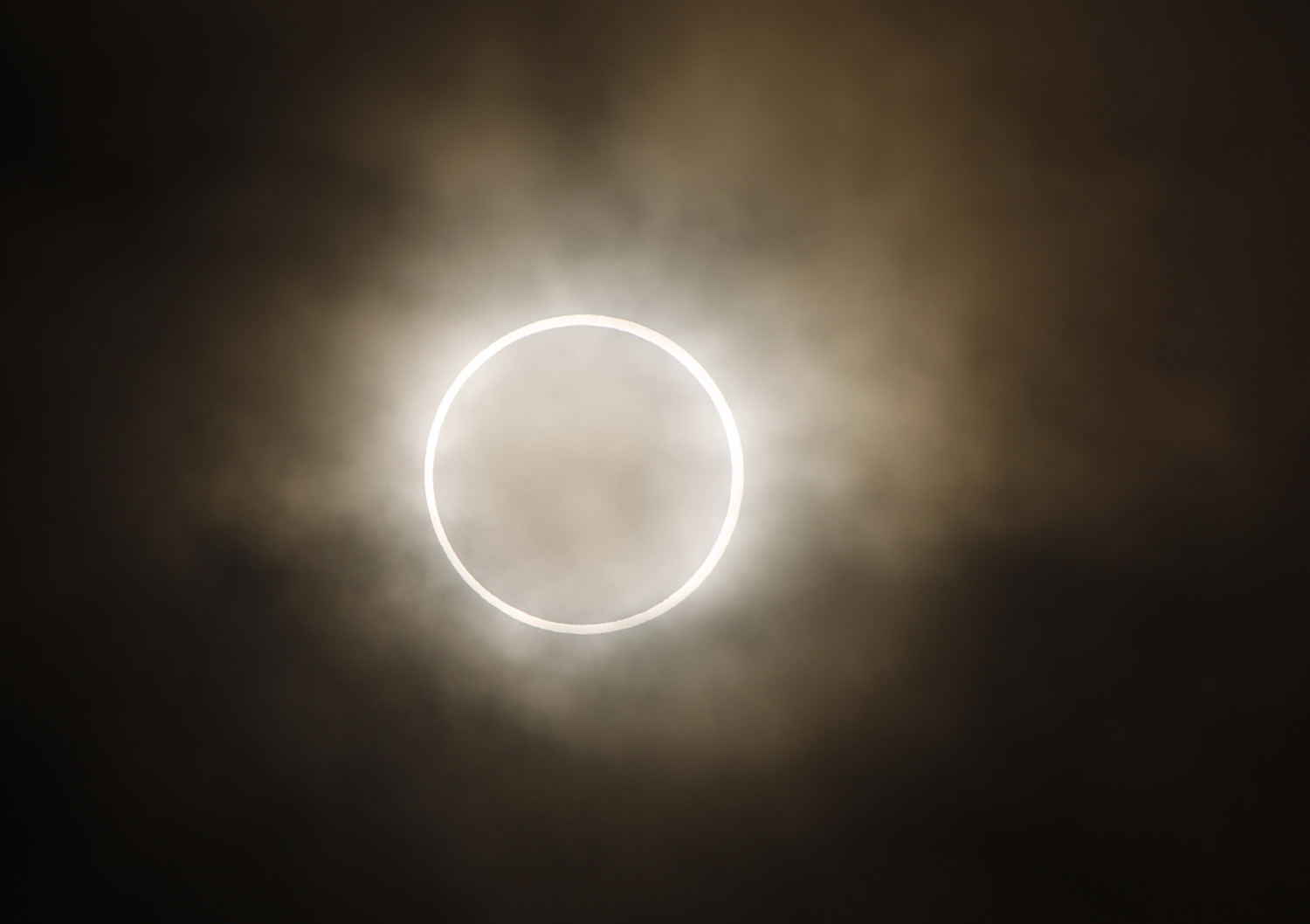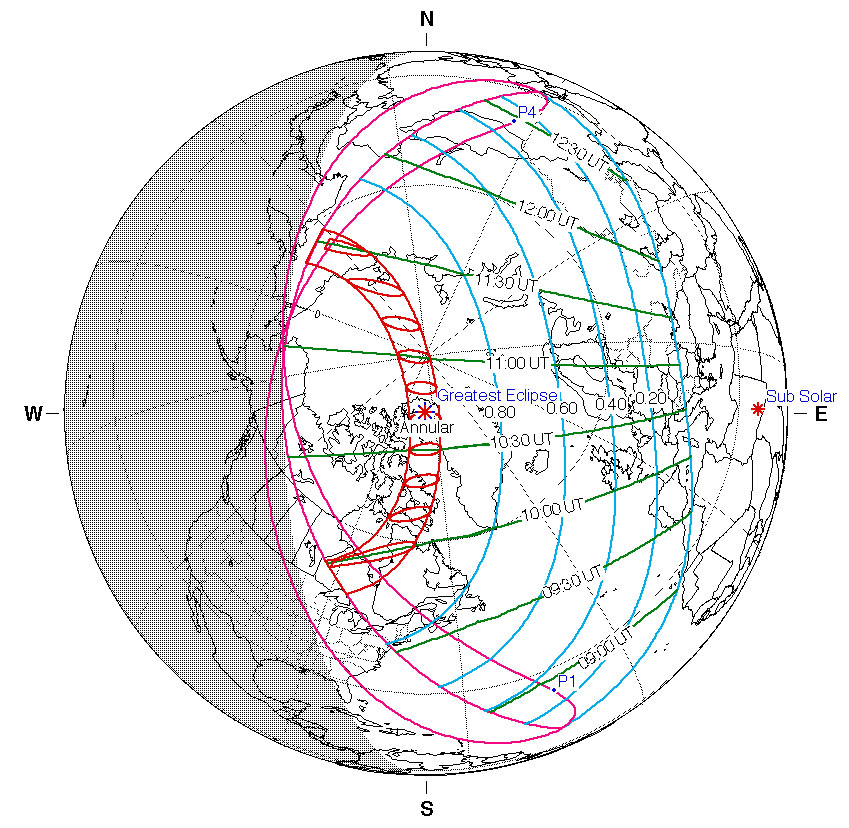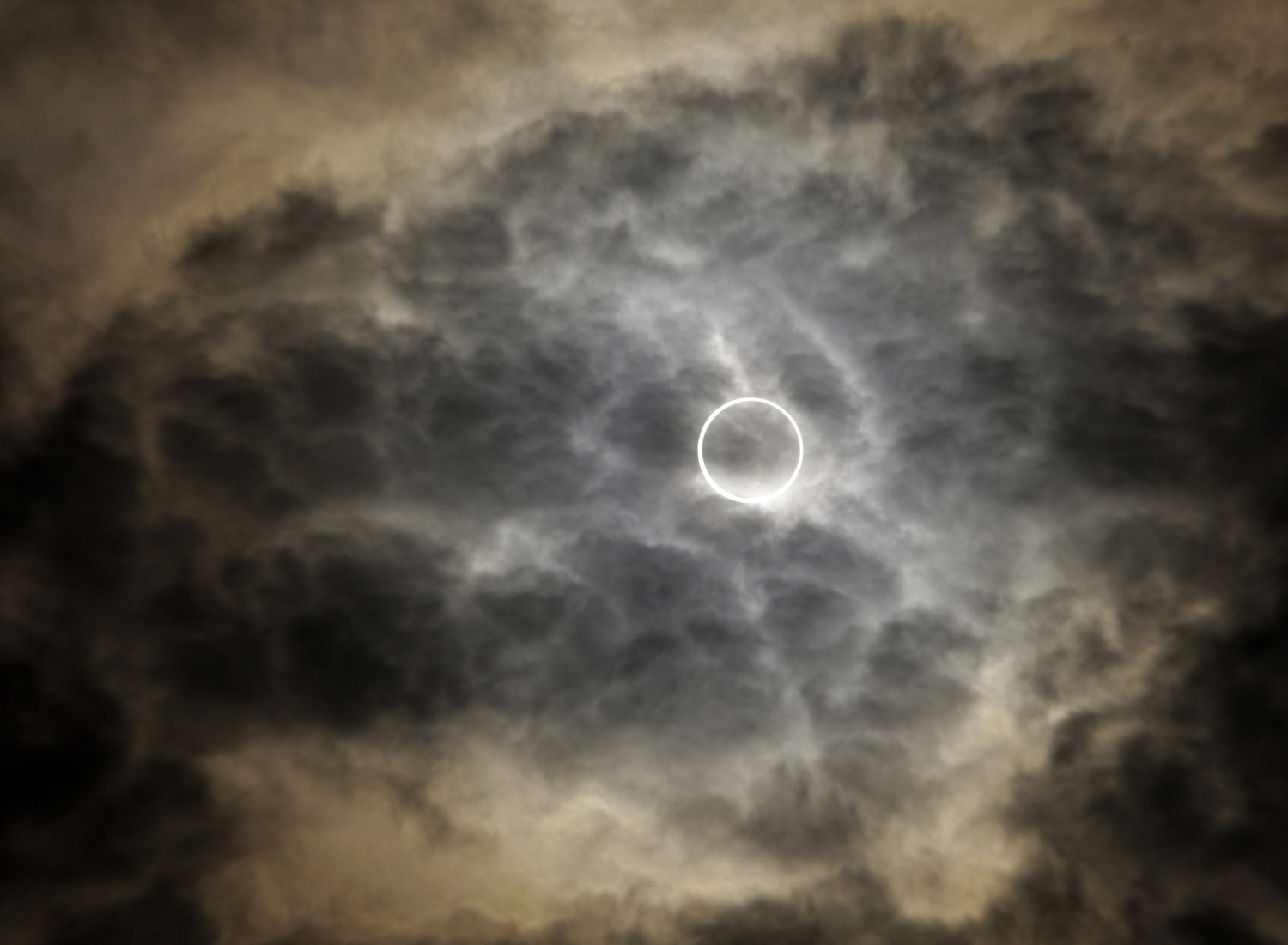Solar eclipse 2021: How to see the ‘ring of fire’ eclipse in June

- May 21, 2021 |Last updated on 06/07/2021
The moon will slide right in front of the sun on June 10, causing an annular solar eclipse.
An annular solar eclipse occurs when the moon passes directly in front of the sun, but the moon is still too far away to cover up the sun completely.
This type of eclipse is also called a “ring of fire” eclipse because watchers will still see an annulus, or ring, of sunshine around the moon as it passes in front of the sun.
This will be the first of two solar eclipses in 2021 and your only chance to see one in North America. To see the eclipse in person, you’ll need to be in the northern reaches of the globe somewhere in the curved red path in the image below.
The annular 2021 solar eclipse begins at sunrise in northern Ontario, Canada, on the north side of Lake Superior.
The full eclipse will begin at 5:49 a.m. EDT on Thursday, June 10, and last for 3 minutes and 51 seconds, leaving a small window of time to see the elusive ring of fire.
From there, the path travels northward to Greenland where watchers will be able to see the greatest point of the eclipse at 12 p.m. local time. After that, the eclipse is viewable at the North Pole before ending at sunset over northeastern Siberia.
The entirety of the eclipse will last for about 100 minutes.
Some people outside the path of annularity will still be able to see a partial eclipse. The northeastern United States, parts of the East Coast and the Upper Midwest can catch the tail end of a partial eclipse right at sunrise.
Regardless of where you are in the eclipse’s path, you’ll need special eye protection to view it. Looking directly at the sun — even during an eclipse — can cause serious damage to your eyes. Special solar eclipse glasses, welder’s glass, a pinhole camera or other method should be used to view any moment of the eclipse.
Types Of Solar Eclipses
Solar eclipses happen twice a year, and there are four types: total, annular, partial and hybrid.
Total solar eclipses occur when the moon completely blocks the sun.
Annular solar eclipses, like the 2021 solar eclipse happening on June 10, occur when the moon is centered over the middle of the sun, but it doesn’t cover the sun completely because the moon is too far away.
Partial solar eclipses happen when the moon’s path in front of the sun is off-center, and only a portion of the sun is blocked by the moon.
A hybrid solar eclipse is a combination of a total and an annular solar eclipse, beginning as one type and ending as another.
Future Solar Eclipses
The next 2021 solar eclipse won’t happen until Dec. 4, 2021. This will be a total solar eclipse, but it will only be visible in Antarctica.
The next solar eclipse that’s visible in North America will be another annular “ring of fire” solar eclipse on Oct. 14, 2023.
That eclipse will be visible to all of the Southwest United States, Central America and the northern parts of South America.
Follow meteorologist Jason Meyers on Twitter or watch one of his entertaining and educational YouTube videos.




